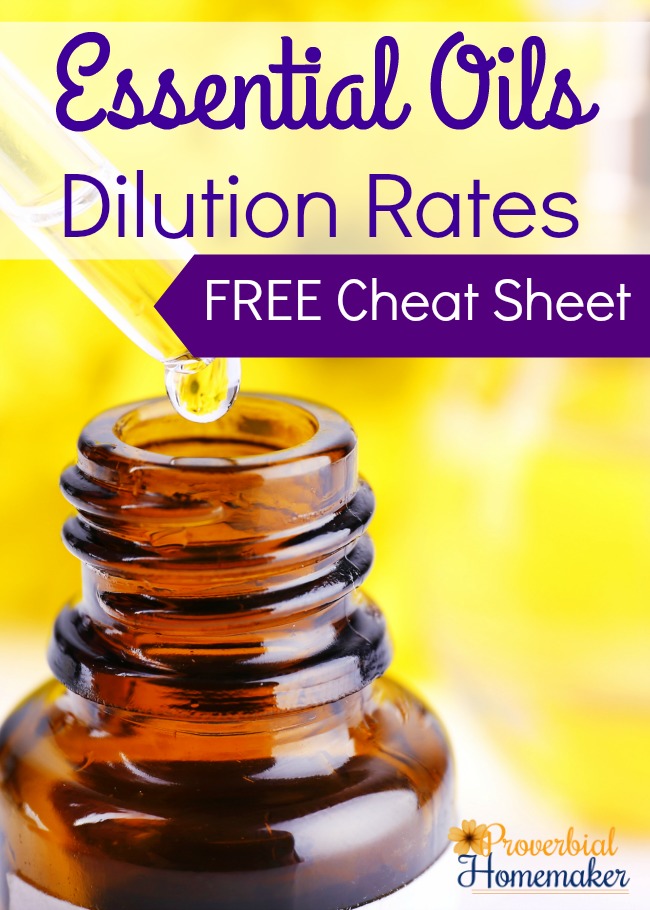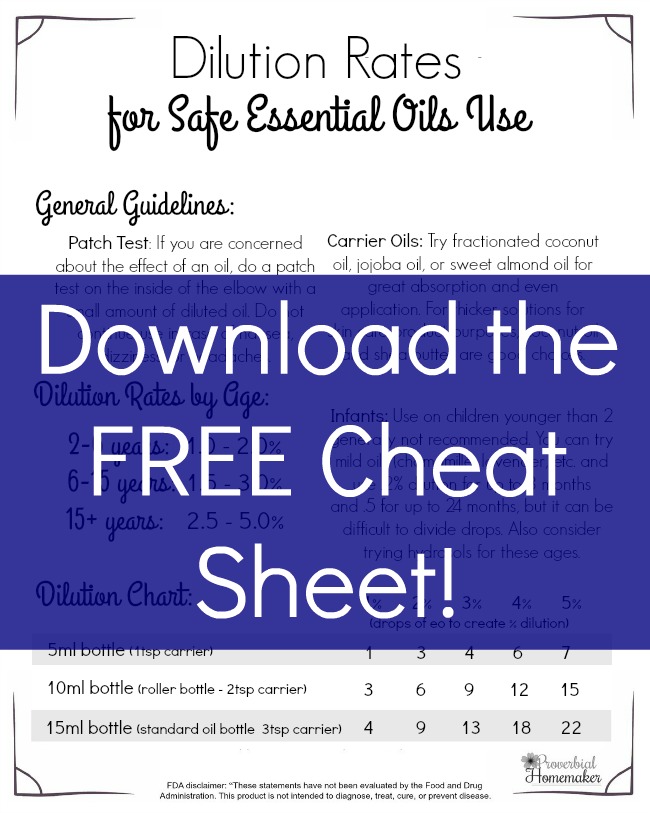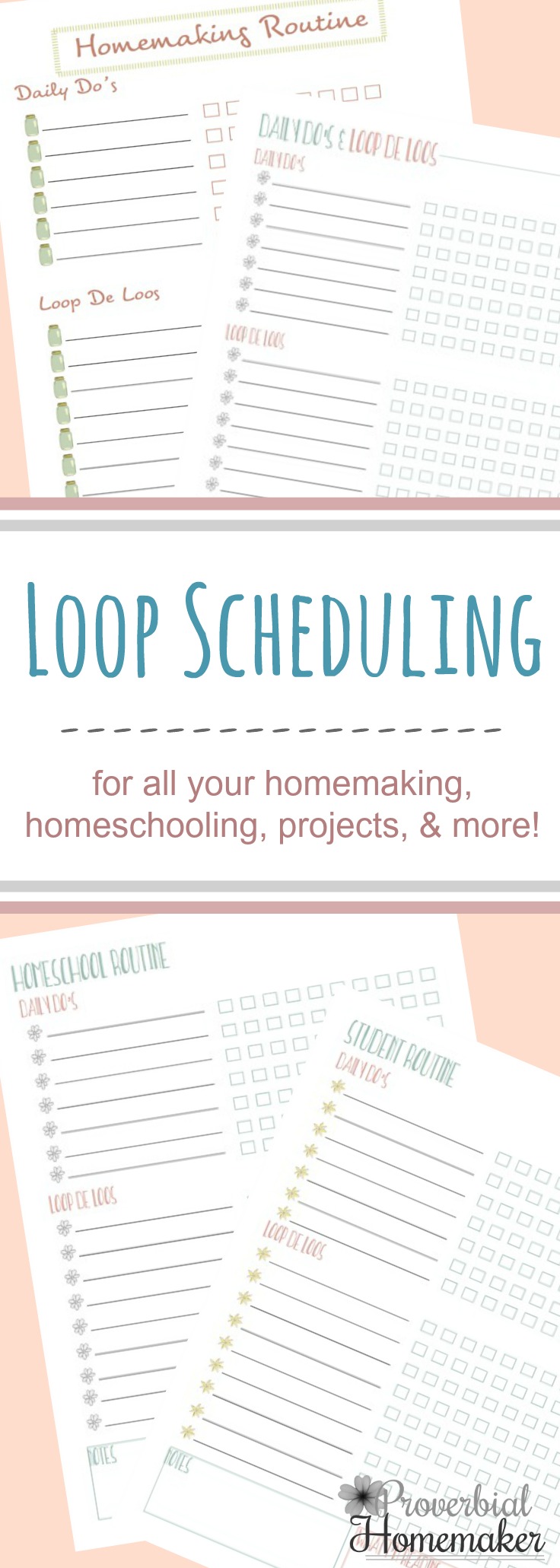When you’re talking about essential oils and kids (0r anyone, really), you want to keep in mind that essential oils are useful but also very powerful substances. As parents, we want to be careful to make sure we’re not overloading their systems with medication. The same is true for essential oils. With a few dilution rates and tips in mind, we can confidently use essential oils with our children!
Disclosure: *This post may include affiliate links. As an affiliate, I earn from qualifying purchases. Read the disclosures and terms for more information.
We’ve talked about some basic tips for using essential oils with your children and I’ve provided a list and printable cheat sheet about WHICH oils to use (or not use) with kids. Today I want to talk a little more about dilution rates and how to safety administer oils for your whole family.
What is Dilution?
Dilution is when you add a small amount of essential oil to a larger amount of base or carrier oil to make it safer for use on skin. Applying essential oils without diluting, which is referred to as applying it “neat,” is generally not recommended. Not only is it unnecessary, since a small amount of essential oil can have a tremendous effect on the body, but it can cause averse reactions or cause sensitivities to develop over time.
Why Are Dilution Rates Important?
You want to apply enough essential oil to be effective but keep things in a safe range for the age and condition of the person you are using it on. So for pregnant or nursing women, children, and those with compromised immune systems, a dilution rate of 1% – 2% is appropriate. Older children and adults, especially those dealing with an acute condition, can use a higher dilution rate up to 5%. Remember, essential oils are natural but they are also powerful! It is wise to use them with caution.
What Carrier Oils Should I Use?
You’ve got the essential oil you want to use, so now which carrier oil do you use? There are MANY different carrier oils to choose from. You can select a variety based on preferences such as scent, thickness, and the inherent therapeutic properties of the carrier oil itself. You can also choose oils based on how the end product will be used, such as making an essential oil body butter using thick shea butter as a carrier.
Personally, I prefer using almond oil, jojoba, or fractionated coconut oil. The latter is the one I use the most because it doesn’t stain, has no scent, and has a very long shelf life. However almond oil has a lovely light scent and is great for skin care and massage. Jojoba is actually a wax rather than an oil, but it has very little scent, a great texture for massage and moisturizing, and is naturally anti-inflammatory.
How Do I Dilute Essential Oils?
When I want to apply a quick rub of oil to my neck or shoulders, I’ll often add a tsp of carrier oil to my palm and a few drops of essential oils. Then rub my hands together and apply. This is quick and easy (I wash my hands afterward so I don’t apply them by mistake to my kids).
The other most common way I dilute is to use 10 ml roller bottles, which I love for convenience. I add the drops of essential oil in the combination I want, and fill the rest with my carrier oil of choice. Then I can just apply as needed!
Pre-Diluted Roller Bottles for Busy Moms!
My favorite roller bottle blends come pre-diluted and labeled! The Kids Line from Rocky Mountain Oils is perfect for the busy mom, the newbie who doesn’t want to mess with blending, and for pregnant moms like me!
Dilution Rate Guidelines and Cheat Sheet
To make things a bit more convenient, you can download this handy cheat sheet that gives basic guidelines for topical essential oil usage, dilution rates by age, and a quick dilution chart.
Download the Dilution Rates Cheat Sheet!
*FDA disclaimer: “These statements have not been evaluated by the Food and Drug Administration. This product is not intended to diagnose, treat, cure, or prevent disease.” The information in this post comes from various books and web sites that I have listed for you here, as well as the aromatherapy certification course through Aromahead Institute.








 by Stephanie, The Multi Taskin' Mom
by Stephanie, The Multi Taskin' Mom
This Post Has 2 Comments
Great tips! Also having the bottles for the kids line just ready to go is life changing!!
I love essential oils.. Especially when I put them in a diffuser..